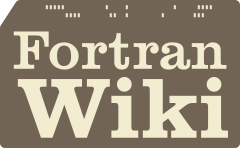Fortran Wiki
Strategy Pattern
Strategy Pattern
Strategy Pattern is a design pattern whereby the algorithm (“strategy”) is selected at run-time, instead of embedding it as a type-bound procedure. Fortran 2003 introduces the concept of procedure pointers and abstract interfaces, which can be used to select the procedure at runtime (polymorphism).
Here is an example:
module m_strategy_pattern
implicit none
type :: Button
character(len=20) :: label
procedure(generic_function), pointer, nopass :: on_submit
contains
procedure :: init
end type Button
abstract interface
subroutine generic_function(numbers)
integer, dimension(:), intent(in) :: numbers
end subroutine
end interface
contains
subroutine init(self, func, label)
class(Button), intent(inout) :: self
procedure(generic_function) :: func
character(len=*) :: label
self%on_submit => func !! Procedure pointer
self%label = label
end subroutine init
subroutine summation(array)
integer, dimension(:), intent(in) :: array
integer :: total
total = sum(array)
write(*,*) total
end subroutine summation
subroutine join(array)
integer, dimension(:), intent(in) :: array
write(*,*) array !! Just write out the whole array
end subroutine join
end module m_strategy_pattern
program test_strategy
use m_strategy_pattern
implicit none
type(Button) :: button1, button2
integer :: i
call button1%init(summation, "Add them")
call button2%init(join, "Join them")
call button1%on_submit([(i, i=1,10)]) !! Array constructor syntax
call button2%on_submit([(i, i=1,10)])
end program test_strategy- Back to Design Patterns
